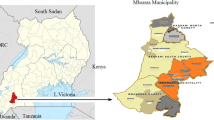Abstract
The mechanical-physical process was proven to be technologically feasible for waste refrigerator recycling and has been widely used in the typical e-waste recycling factories in China. In this study, effects of the acoustic hood on the reduction of noise level, CFC-11, and heavy metals (Cr, Ni, Cu, Cd, and Pb) in particulate matter (PM) were evaluated. For noise pollution, the noise level inside and outside the acoustic hood was 96.4 and 78.9 dB, respectively. Meanwhile, it had a significant effect on A-weighted sound level with a reduction from 98.3 to 63.6 dB. For CFC-11 exposure, abundant CFC-11 (255 mg/m3) was detected in the acoustic hood. However, the mean concentration of CFC-11 at the outline of polyurethane foam collection was obviously diminished to 14 mg/m3, and no CFC-11 was monitored around the acoustic hood. The concentrations of PM and heavy metals in PM outside the acoustic hood were lower than those inside the acoustic hood due to the physical barriers of the acoustic hood. Based on the risk assessment, only adverse health effect caused by Pb might likely appear. All the results can provide the basic data for pollution control and risk assessment in waste refrigerator recycling system.





Similar content being viewed by others
References
Chang J, Liu M, Li XH, Lin X, Wang LL, Gao L (2009) Primary research on health risk assessment of heavy metals in road dust of Shanghai. China Environ Sci 29:548–554
Čudina M, Prezelj J (2007) Noise generation by vacuum cleaner suction units. Part I. Noise generating mechanisms—an overview. Appl Acoust 68:491–502
Ferreira-Baptista L, De Miguel E (2005) Geochemistry and risk assessment of street dust in Luanda, Angola: a tropical urban environment. Atmos Environ 39:4501–4512
Goosey M, Kellner R (2003) Recycling technologies for the treatment of end of life printed circuit boards (PCBs). Circuit World 29:33–37
Lambert AJD, Stoop MLM (2001) Processing of discarded household refrigerators: Lessons from the Dutch example. J Clean Prod 9:243–252
Laner D, Rechberger H (2007) Treatment of cooling appliances: Interrelations between environmental protection, resource conservation, and recovery rates. Resour Conserv Recycl 52:136–155
Leung AOW, Duzgoren-Aydin NS, Cheung KC, Wong MH (2008) Heavy metals concentrations of surface dust from e-waste recycling and its human health implications in southeast China. Environ Sci Technol 42:2674–2680
Li J, Xu Z (2010) Environmental friendly automatic line for recovering metal from waste printed circuit boards. Environ Sci Technol 44:1418–1423
Lungu M (2005) Separation of small nonferrous particles using an angular rotary drum eddy-current separator with permanent magnets. Int J Miner Process 78:22–30
Maraspin F, Bevilacqua P, Rem PC (2004) Modelling the throw of metals and nonmetals in eddy current separations. Int J Miner Process 73:1–11
Ruan J, Xu Z (2011) Environmental friendly automated line for recovering the cabinet of waste refrigerator. Waste Manag 31:2319–2326
Ruan J, Xue M, Xu Z (2012) Risks in the physical recovery system of waste refrigerator cabinets and the controlling measure. Environ Sci Technol 46:13386–13392
US OSHA (2013) (Occupational Safety and Health Administration) Occupational Safety and Health Standards; 10.95 App A; Department of Labor, Occupational Safety and Health Administration. Available at: http://www.osha.gov/index.html.
USEPA (1999) (Environmental Protection Agency). Determination of Metals in Ambient Particulate Matter Using Inductively Coupled Plasma/Mass Spectrometry; U.S. EPA: Washington, D.C., Available at: http://www.epa.gov/ttnamti1/files/ambient/inorganic/mthd-3-5.pdf
USEPA (2011) (Environmental Protection Agency). Exposure Factors Handbook: edition. EPA/600/R-09/052 F. Environmental Protection Agency, Office of Research and Development, Washington, D.C., 2011. Available at: http://www.epa.gov/ncea/efh/pdfs/efh-complete.pdf
Watson JHP, Younas I (2001) Permanent magnet superconducting tubes for use in magnetic separation. Ind Ceram 21:105–108
Yi D (2012) White paper of waste electric and electronic products recycling industry. China Appl 6:62–62
Zhou X (2007) Noise control technology and its new progress. In: Metallurgical Industry Press, Beijing
Acknowledgments
This work was supported by the National Natural Science Foundation of China (21077071, 21307030) and the National High Technology Research and Development Program of China (863 program 2012AA063206).
Author information
Authors and Affiliations
Corresponding author
Additional information
Responsible editor: Constantini Samara
Rights and permissions
About this article
Cite this article
Guo, J., Fang, W., Yang, Y. et al. Effects of acoustic hood on noise, CFC-11, and particulate matter in a recycling system for waste refrigerator cabinet. Environ Sci Pollut Res 21, 12701–12708 (2014). https://doi.org/10.1007/s11356-014-3203-2
Received:
Accepted:
Published:
Issue Date:
DOI: https://doi.org/10.1007/s11356-014-3203-2




